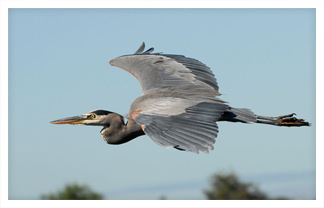
 Stocky black, white and grey birds that hunt fish and small crustaceans primarily at night, have already been seen at Eagle Marsh. Indiana endangered, these herons will stir the water with their beaks to try to attract prey. When they catch something, they can turn it around to swallow head-first and they do just fine digesting bones. The herons nest in colonies of up to a dozen nests that consist of a platform of sticks placed in trees or cattails. Their presence is considered an indicator of ecosystem health, and we hope a colony decides to nest at Eagle Marsh or Arrowhead Marsh soon.
Stocky black, white and grey birds that hunt fish and small crustaceans primarily at night, have already been seen at Eagle Marsh. Indiana endangered, these herons will stir the water with their beaks to try to attract prey. When they catch something, they can turn it around to swallow head-first and they do just fine digesting bones. The herons nest in colonies of up to a dozen nests that consist of a platform of sticks placed in trees or cattails. Their presence is considered an indicator of ecosystem health, and we hope a colony decides to nest at Eagle Marsh or Arrowhead Marsh soon.
Did you know?
The Blue Heron is the largest North American Heron with a wingspan of 66-79 inches and a heigh of 45-54 inches!
Did you know?
The primary food for the Blue Heron is small fish, though it is also known to opportunistically feed on a wide range of shrimp, crabs, aquatic insects, rodents and other small mammals, amphibians, reptiles, and small birds.
Herons locate their food by sight and usually swallow it whole.




 Little Rivers Wetlands Project -
Little Rivers Wetlands Project -
